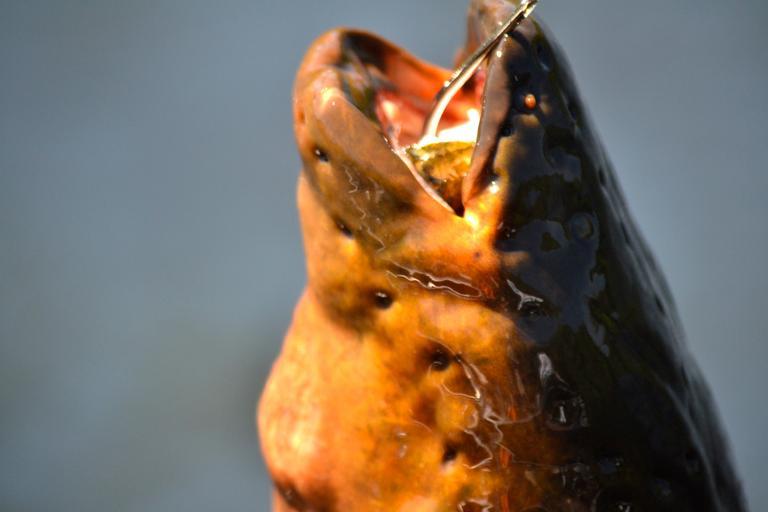MAKE A MEME
View Large Image

| View Original: | Poraquê_"Electrophorus_electricus".jpg (4608x3072) | |||
| Download: | Original | Medium | Small | Thumb |
| Courtesy of: | www.flickr.com | More Like This | ||
| Keywords: poraque fish fishing electrophorus E. electricus is a benthopelagic (area of water not near the bottom) (ecological region at the lowest level of water body), nocturnal species that generally inhabits the muddy bottoms of rivers, streams, pools and swamps, favouring deeply shaded areas. This species is an obligatory air breather and can withstand poorly oxygenated water. Juveniles feed on invertebrates, whilst adults feed on fish and small mammals. E. electricus is a fractional spawner; there are three successive batches of eggs deposited in a spawning period. Males construct foam nests and guard the growing larvae until mid-January when the first seasonal rains flood the breeding area, causing the young eels to disperse. First-born larvae prey on other eggs and embryos coming from late spawning batches. There is a male-biased sex ratio, (3:1) and males are also considerably larger than females. E. electricus has little economic value to humans. Occasionally they are eaten by locals of the Amazon area. Although there is no commercial value, the electric eel has been a constant source of study for many years. The scientific community is very interested in studying the electrical capabilities of these fish. Of electric fish, E. electricus is the best documented species (Moller 1995). Not a significant level of harvest to constitute any threat. Reis, R & Lima, F. 2009. Electrophorus electricus. The IUCN Red List of Threatened Species. Version 2015.2. . Downloaded on 30 July 2015. E. electricus is a benthopelagic (area of water not near the bottom) (ecological region at the lowest level of water body), nocturnal species that generally inhabits the muddy bottoms of rivers, streams, pools and swamps, favouring deeply shaded areas. This species is an obligatory air breather and can withstand poorly oxygenated water. Juveniles feed on invertebrates, whilst adults feed on fish and small mammals. E. electricus is a fractional spawner; there are three successive batches of eggs deposited in a spawning period. Males construct foam nests and guard the growing larvae until mid-January when the first seasonal rains flood the breeding area, causing the young eels to disperse. First-born larvae prey on other eggs and embryos coming from late spawning batches. There is a male-biased sex ratio, (3:1) and males are also considerably larger than females. E. electricus has little economic value to humans. Occasionally they are eaten by locals of the Amazon area. Although there is no commercial value, the electric eel has been a constant source of study for many years. The scientific community is very interested in studying the electrical capabilities of these fish. Of electric fish, E. electricus is the best documented species (Moller 1995). Not a significant level of harvest to constitute any threat. Reis, R & Lima, F. 2009. Electrophorus electricus. The IUCN Red List of Threatened Species. Version 2015.2. . Downloaded on 30 July 2015. | ||||